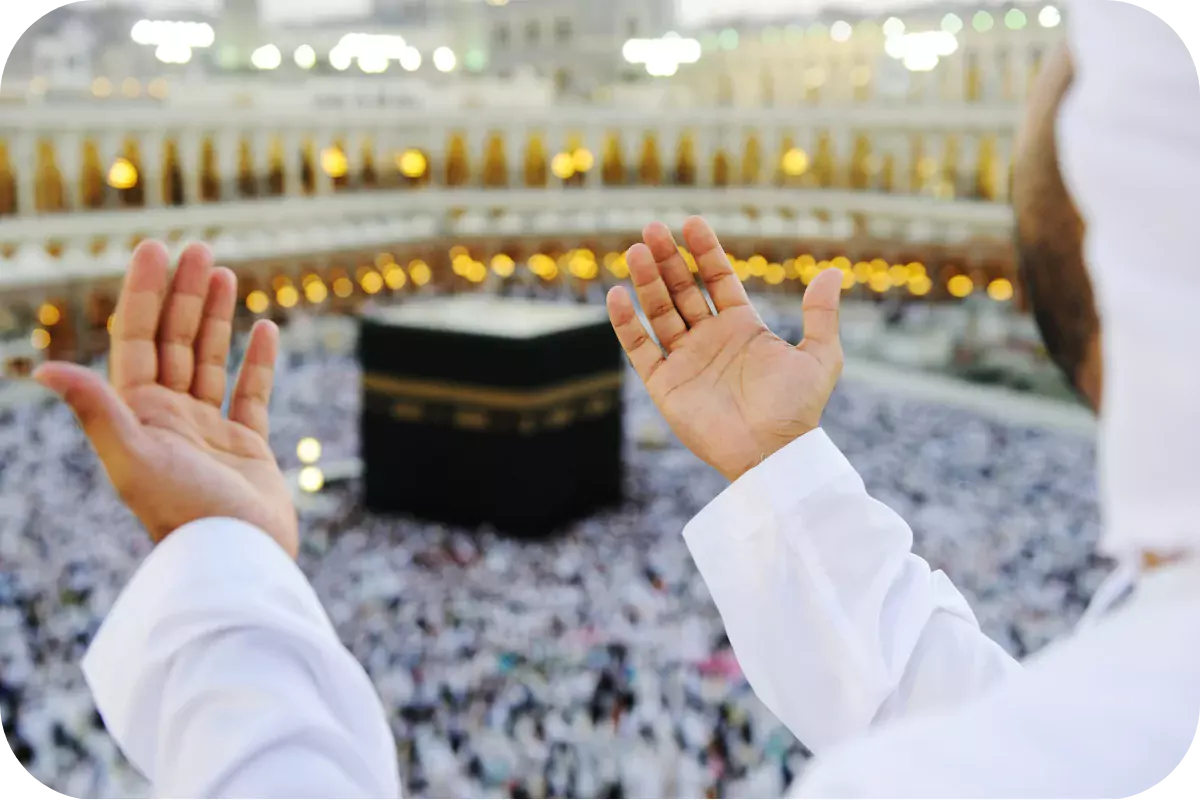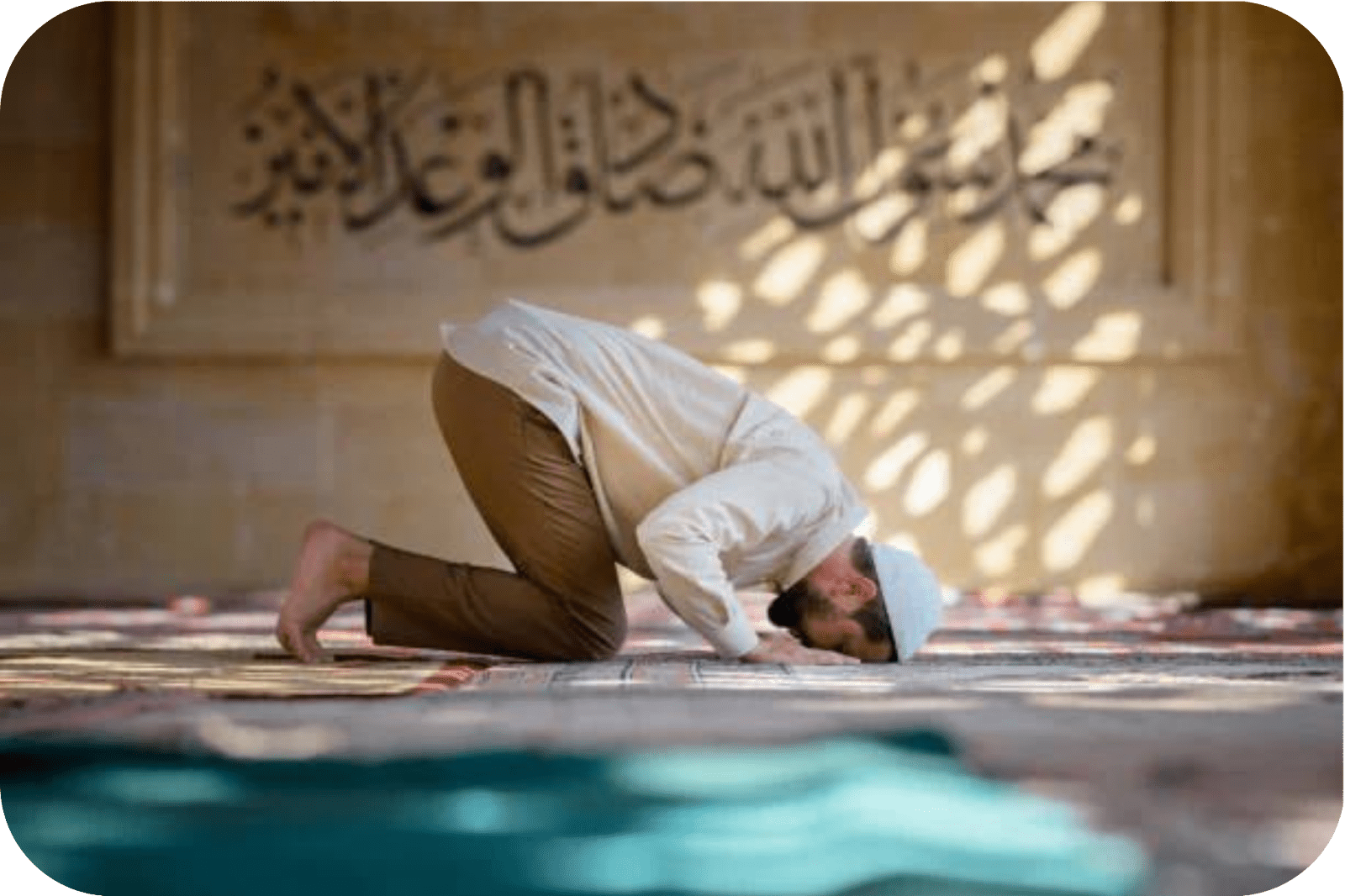When is Hajj 2024?
When is Hajj 2024?

Hajj is a sacred pilgrimage that holds great significance for Muslims around the world. It is one of the five pillars of Islam and is required for every able Muslim to perform at least once in their lifetime.
Each year, millions of Muslims from various countries come together in Makkah, located in modern-day Saudi Arabia, to perform Hajj, which takes place each year during Dhul Hijjah, the twelfth month in the Islamic calendar.
Browse our selection of Hajj and Umrah essentials, including abayas, hijabs, and prayer mats. Find everything you need for your journey to Makkah and Madinah.
What is Hajj In Islam?
The sacred pilgrimage of Hajj involves a series of rituals that serves as reminders of devotion, obedience, and humility and provide a spiritual, emotional, and sense of a physical challenge for the pilgrim.
These rituals, rooted in the legacy of Prophet Ibrahim (RA), transcend time and provide a tangible connection to the core principles of Islam. As the pilgrim engages in these acts, they embark on a journey of self-discovery, deepening their spiritual connection and forging a profound sense of unity with millions of fellow believers.
As the Prophet Muhammad (peace and blessings be upon him) said:
“Whoever performs Hajj for the sake of Allah and does not utter any obscene speech or do any evil deed, will go back (free of sin) as his mother bore him."
(Sahih al-Bukhari, 1521)
When is Hajj 2024?
Hajj in 2024 is anticipated to take place between 14th June to the 19th June in the Gregorian Calendar or 8th to the 13th of Dhul Hijjah for the Islamic Calendar. It's essential to note that the Islamic calendar operates on the lunar cycle, leading to a shift of approximately 11-12 days each year relative to the Gregorian calendar.
The specific dates for Hajj are determined by the sighting of the first crescent moon on the last night of the preceding month, Shawwal. As a result, the commencement of Hajj may vary, adding an element of anticipation and reverence to this sacred pilgrimage.
If you’re going for Hajj or Umrah soon, this comprehensive guide is here to assist you in crafting the ultimate packing checklist for a comfortable journey!
How Long Does Hajj Last?
The Hajj pilgrimage is not a single-day event; instead, it extends over a period of five to six days. This significant journey unfolds from the 8th to the 13th of Dhul Hijjah, the last month in the Islamic calendar.
Across these days, pilgrims engage in a sequence of sacred rituals, each laden with symbolic meaning:
1. Preparation and Intention: Make necessary preparations, including travel arrangements and accommodation, before entering the sacred state of Ihram.
2. Enter State of Ihram: Begin the pilgrimage by entering the sacred state, involving specific clothing and adherence to rules, such as refraining from anger or engaging in sexual activity.
3. Tawaf ( x7): Perform Tawaf by circumambulating the Kaaba in Mecca seven times, symbolizing unity and devotion to Allah.
4. Safa and Marwa: Engage in the Sa'i ritual, commemorating Hajar's search for water by running between the hills of Safa and Marwa.
5. Resting and Praying: Spend time in prayer and reflection.
6. Enter State of Ihram: Re-enter the state of Ihram for the Hajj pilgrimage.
7. Arrive at Mina: Travel to Mina, the tent city near Mecca, to spend the day in prayer.
8. Day of ‘Arafah: Stand at Mount Arafat, offering prayers and seeking forgiveness.
9. Muzdalifah (under the night sky): Move to Muzdalifah, spending the night collecting pebbles for the next day's rituals.
10. Rami (stoning of the devil): Throw pebbles at pillars representing the devil in Mina.
11. Qurbani: Perform the ritual sacrifice, symbolizing Prophet Ibrahim's sacrifice and providing for those in need.
12. Shave Head: Shave or trim hair as a symbolic act.
13. Tawaf al-Ifadah: Perform Tawaf again, circling the Kaaba.
14. Rami (stoning of the devil): Repeat the stoning ritual in Mina.
15. Spend night at Mina: Stay overnight in Mina.
16. Rami (stoning of the devil): Continue the stoning ritual in Mina.
17. Farewell Tawaf al-Wida: Perform a final circumambulation of the Kaaba, marking the end of the pilgrimage.
As believers embark on this collective pilgrimage, the duration of Hajj serves as a testament to the depth and significance of the experience offering unique lessons.
Where Does The Hajj Take Place?
The Hajj pilgrimage Hajj is performed in Makkah, modern day Saudi Arabia, across several locations, each holding unique significance.
Key Locations Include:
The City of Makkah: This is where the pilgrimage begins, with pilgrims circling the Kaaba in a symbolic act of devotion.
The Tent Settlement of Mina: Pilgrims gather here for symbolic stoning rituals, representing the rejection of evil and the triumph of righteousness.
Mount 'Arafah: A significant site where pilgrims stand together in collective worship and supplication, forging a profound connection with the divine.
Muzdalifah: A place of rest and reflection, where pilgrims spend a night during the pilgrimage, deepening their connection with the spiritual journey.
What Happens On Hajj?
During the sacred pilgrimage of Hajj, pilgrims partake in a series of profound rituals, each laden with deep symbolism and historical significance:
What to do on day 1 (8th of Dhul Hijjah / 14th June)
1. Enter Ihram (the Sacred State)
Pilgrims commence their journey by entering ihram at Miqat. Ihram involves wearing plain garments, symbolizing humility and equality among participants. This sacred state signifies the beginning of their pilgrimage, as they prepare to undertake the rituals ahead.
2. Head to Mina, a Sprawling Tent City
After entering ihram, pilgrims travel to Mina, a tent city near Mecca. This journey, whether by foot or other transportation, covers approximately 8 km. In Mina, they spend the day in prayer and reflection, reinforcing the spiritual significance of the pilgrimage.
What to do on day 2 (9th of Dhul Hijjah / 15th June)
1. Spend the Day at Arafat
Pilgrims move to the plains of Arafat, a site of great importance. The Day of Arafat holds historical significance, as it was the location of Prophet Muhammad's final sermon. Pilgrims spend the day in earnest prayer, seeking forgiveness and reflecting on their spiritual journey.
2. Collect Pebbles at Muzdalifah
After sunset, pilgrims proceed to Muzdalifah, a 9 km journey. Here, they collect pebbles for the symbolic stoning ritual. Spending the night under the stars, this stage emphasizes the simplicity and spirituality of the Hajj pilgrimage.
What to do on day 3 (10th of Dhul Hijjah / 16th June)
1. Throw Stones at the Pillars
This day is known as Yawm-ul Hajj al-Akbar (The big Hajj day). Pilgrims return to Mina, where they perform the symbolic stoning of the devil by casting seven pebbles at the largest of three pillars known as Jamarat. This act represents the rejection of evil and the triumph of righteousness.
2. Perform Sacrifice and Rituals
Following the stoning ritual, pilgrims proceed to perform the sacrifice, recalling the story of Prophet Abraham (RA). This involves slaughtering a sheep, goat, cow, or camel.
Pilgrims, mostly men, trim or shave their hair, signaling the end of one stage of the pilgrimage. Many then head to Mecca to perform Tawaf and Saee, further solidifying their connection with the divine.
What to do on day 4 and 5 (11th and 12th of Dhul Hijjah / 17th and 18th June)
1. Final Days in Mina
These days mark the culmination of the Hajj pilgrimage, where pilgrims again symbolically stone the devil by casting seven pebbles at each of the three pillars. The finality of this ritual reflects the triumph of faith over adversity and the purification of the soul. Pilgrims spend these last days in Mina, engaging in prayer, reflection, and celebrating the spiritual growth achieved throughout their transformative journey.
Throughout these rituals, pilgrims experience a range of emotions, from profound connection and humility to overwhelming peace. Hajj becomes a time of introspection, self-reflection, and a profound quest for closeness to Allah, fostering a collective sense of unity and brotherhood among Muslims worldwide.
What is Eid al-Adha?
Eid al-Adha, also known as the Festival of Sacrifice, marks the end of Hajj. It is a joyous occasion celebrated by Muslims worldwide. The festival commemorates the willingness of the Prophet Ibrahim (Abraham)(RA) to sacrifice his son as an act of obedience to Allah. However, just as Ibrahim was about to sacrifice his son, Allah provided a ram as a substitute, symbolizing the importance of devotion and submission.
Eid al-Adha is characterized by prayers, the exchange of gifts, and the sharing of meals with family, friends, and those in need. Muslims also sacrifice animals, such as sheep or goats, following the example of Prophet Ibrahim (RA), and distribute the meat among family, friends, and the less fortunate.
Conclusion
Hajj stands is a religious obligation and one of the pillars of Islam, this transformative journey where millions of Muslims unite in faith, goes beyond the physical act, becoming a profound exploration of self-discovery and spiritual growth. The shared experiences and collective devotion during Hajj create a tapestry of unity and connection that transcends boundaries.
As you embark on this spiritual odyssey, may your Hajj journey be filled with meaning, reflection, and a deepened connection with the divine. Hajj is more than a pilgrimage; it is a timeless journey of the heart and soul, and we at Riwaya are honored to be a part of your sacred endeavor.
Buying at Riwaya
Riwaya offers a range of Islamic products that can enhance the Hajj journey. From prayer mats and modest clothing suitable for the pilgrimage to guidance books and materials that help individuals prepare for Hajj, ensuring they have a meaningful and fulfilling experience.
Explore our range of essential items designed to make your Hajj journey more comfortable and spiritually fulfilling.
Selling at Riwaya
Sellers have an opportunity to contribute to the Hajj experience by offering products aligned with the pilgrimage. By providing essential supplies and items that cater to the needs of pilgrims, sellers can play a crucial role in helping Muslims fulfill their religious obligations.
At Riwaya we offer a platform that connects these sellers with a global audience, enabling them to reach a broader market and make a positive impact.
FAQs
Q1: Does Hajj Occur On The Same Dates Every Year?
No, the timing of Hajj varies each year based on the Islamic lunar calendar. It is determined by the sighting of the moon and the beginning of the Islamic month of Dhul-Hijjah.
Q2: Where Does The Hajj Take Place?
Hajj takes place in Mecca, Saudi Arabia. Pilgrims gather in Mecca and perform various rituals at sacred sites, including the Kaaba, the plains of Arafat, and the hills of Safa and Marwa, across several locations like: The City of Makkah, The Tent Settlement of Mina, Mount 'Arafah, and Muzdalifah.
Q3: Who Is Excluded From Hajj?
Only Muslim adults (male or female) are required to perform Hajj. This means that, while children may go to Hajj, it is not required of them, also the physically and financially incapable Muslims are all exempt from having to perform the pilgrimage.
Q4: How Do You Prepare For Hajj?
Preparing for Hajj involves both physical and spiritual preparations. It includes arranging travel logistics and the, acquiring the necessary visas and permits, and familiarizing oneself with the rituals and customs of Hajj. It is also essential to engage in spiritual practices, such as increasing acts of worship and seeking knowledge about the significance of Hajj.
Q5: What's the difference between Hajj And Umrah?
Hajj is one of the Five Pillars of Islam and is obligatory, only be done under certain conditions, and during a particular time, and It involves a comprehensive set of rituals and actions. Umrah is a voluntary pilgrimage, recommended but not obligatory, with fewer rituals and at any time frame.



